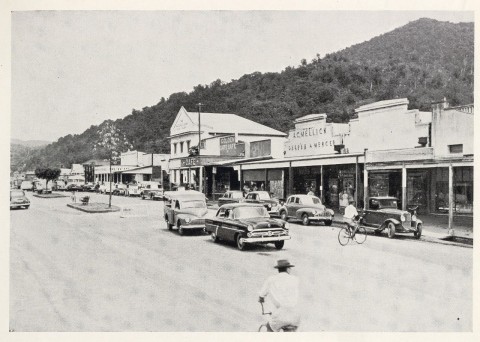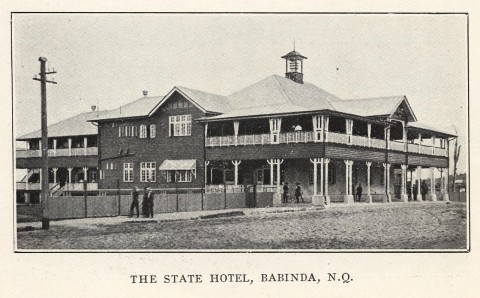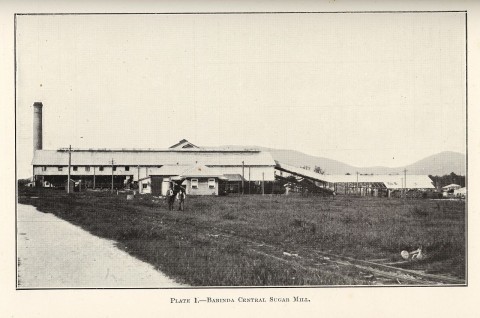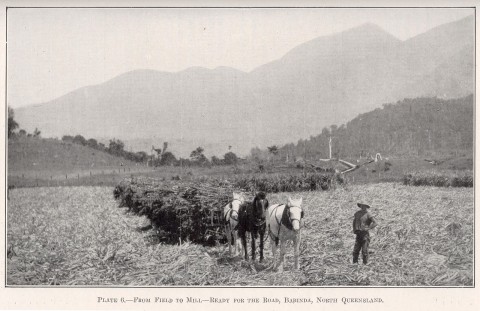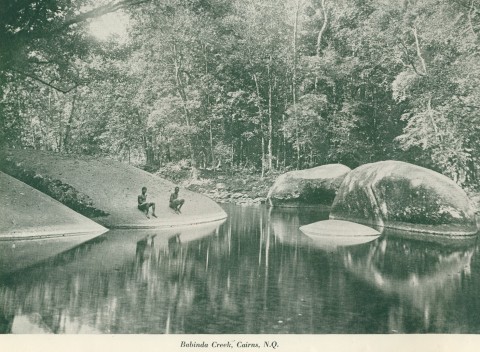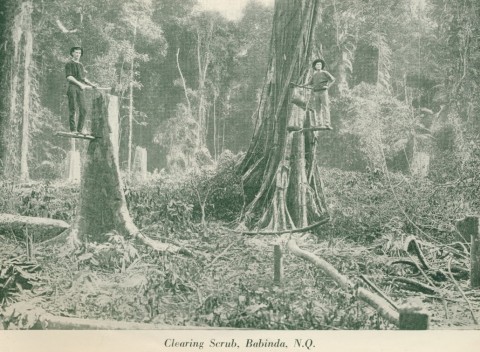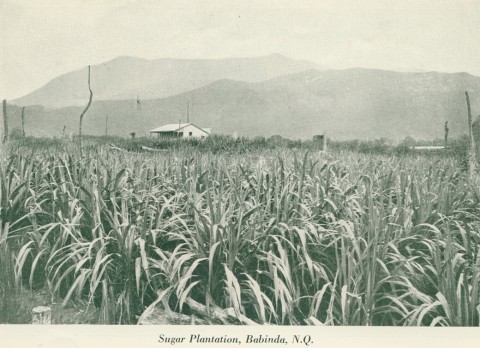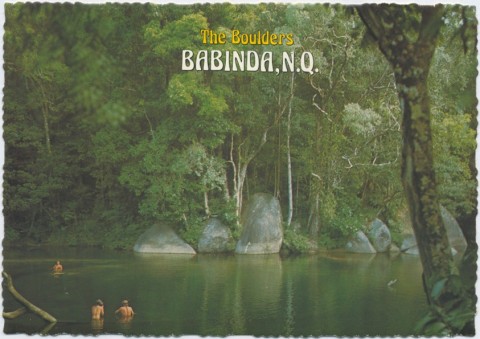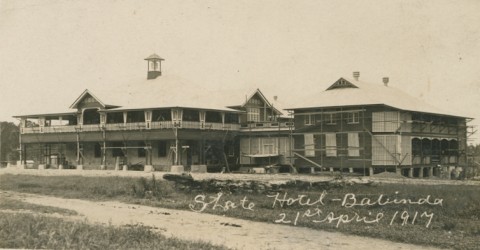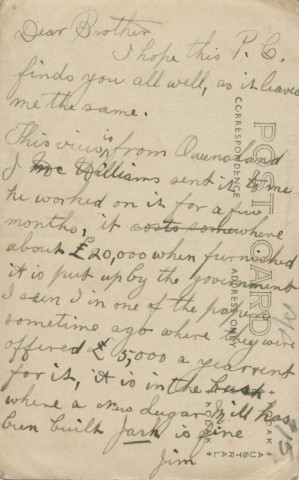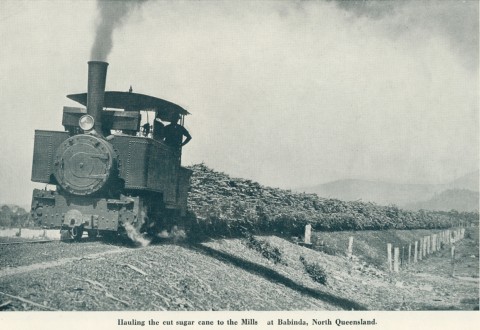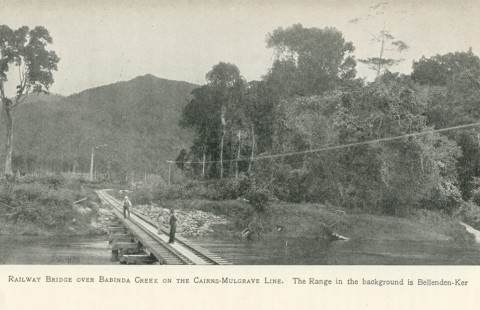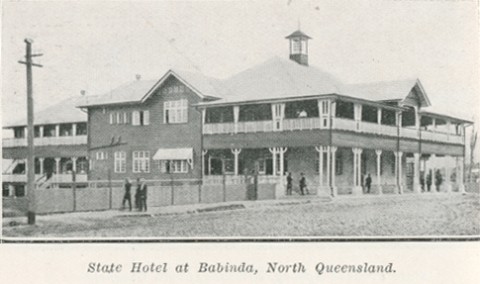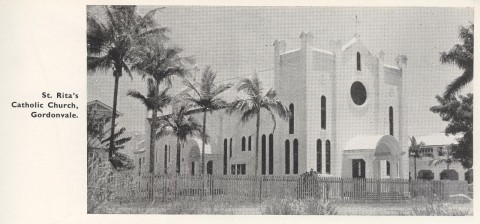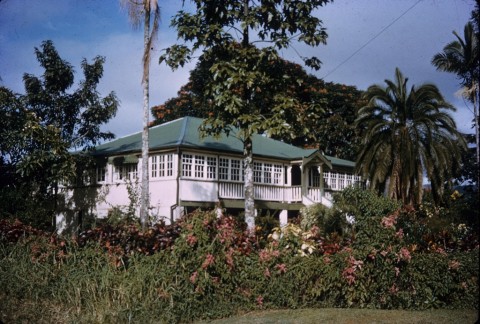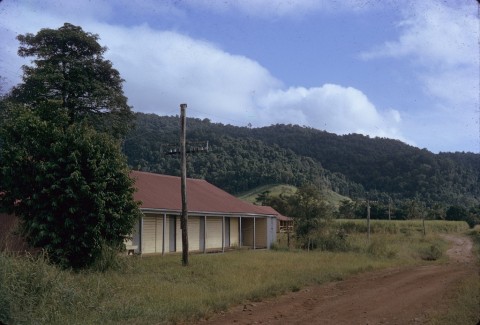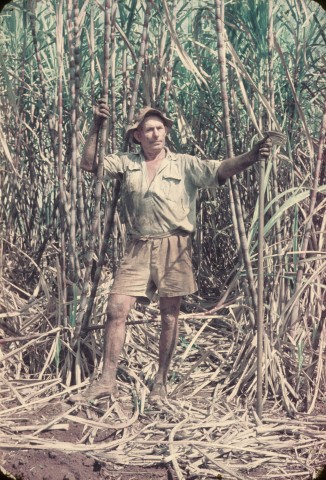Babinda, a rural town, is 50 km south-east of Cairns and 10 km inland from the coast. It was named after the Babinda Creek, the name thought to have been derived from an Aboriginal expression referring to 'waterfall' or 'rain'. Either is plausible, as Babinda has a very high rainfall caught by the Bellenden Ker Range, in particular Mount Bartle Frere, Queensland's highest summit. Babinda lies between the coastal Graham Range and the inland Bellenden Ker Range to the west, and is in the Cairns Regional Council local government area.
In the 1880s-90s the Babinda Creek district had coffee and sugar plantations, but sugar predominated. Agitation began in the early 1900s for a central mill, and in 1915 a government mill began operation. Babinda benefited from the reformist Ryan Labor government's price control and state enterprise policies, and became a largely government town: residential and business sites were occupied under government lease, the freehold hotel was closed (with a compensation payment) and the State Hotel established, the sole manifestation of a short-lived Labor policy to monopolise and eventually end liquor supply in the State. The hotel, the sole government enterprise established during this period of Labor government to turn a profit, is listed on the Queensland heritage register and boasts one of the longest bars in Queensland. Freehold titles were negotiated in 1929.
Between 1911 and 1921 Babinda's population increased five-fold to nearly 1000 people. Pugh's Queensland Directory (1924) recorded the State and Babinda Creek (temperance) Hotels, several storekeepers, tradespeople and a sawmill. There was also a hospital (1923). The Cairns-Mulgrave tramway (actually a 3 feet 6 inch gauge railway) had been extended to Babinda in 1910, and after it was taken over by the government in 1911 it was linked to the North Coast line at Innisfail in 1924.
The sugar mill was taken over by cane farmers in 1924 and the State Hotel was transferred to private ownership. Babinda's Anglo-Irish population was outnumbered by immigrants, chiefly Italian (farmers), Danish, Greeks, Maltese and Asian. In the post World War II years, when sugar prices were high, the hospital was enlarged and an RSL hall and picture theatre were opened. New Anglican and Catholic churches were built. A collapse of sugar prices in the 1980s saw the sale of the mill to Bundaberg Sugar, diversification into tropical fruit growing and investment in tourism: Bellenden Ker was made a World Heritage site in 1988. The mill adjoined the railway station and obtained sugar cane from the floor of the inter-mountain plain and the valley of the Babinda Creek.
In 2000 sugar prices were severely depressed, along with the town's business confidence. Local self-help, a federal grant to help establish new professional services and the opening of a Bendigo Bank branch brought about a recovery by 2004. Babinda's high rainfall also produced a bumper sugar crop in 2003. In 2006 about 80% of Babinda's buildings were severely damaged by Cyclone Larry, and sugar production was reduced by about 40%. The Babinda Picture Theatre was almost destroyed during Cyclone Larry but was rebuilt and restored from a local fundraising effort and reopened the following year.
On 3 February 2011, the Category 5 Cyclone Yasi passed over the Queensland coast, centred about 100 km south of Babinda. Damage was extensive. More damaging in the long term was the announcement five days later that the Babinda sugar mill would close within two months. The mill was decommissioned and in 2013 it was demolished.
Babinda has a hospital, golf, bowling and swimming facilities, a showground, the Munro Picture theatre, a community centre, an information centre, a State high and primary (1914) school and a Catholic primary school (1926).
Babinda's census populations have been:
| Census Date | Population |
|---|---|
| 1911 | 195 |
| 1921 | 980 |
| 1933 | 1818 |
| 1966 | 1553 |
| 1981 | 1389 |
| 2001 | 1175 |
| 2006 | 1167 |
| 2011 | 1068 |
The Mulgrave Shire, Cairns, McDonald & Sons, 1954
Babinda and Mulgrave Herald, 3 May 1979, pp 4-5.
'Babinda heritage study', Cairns City Council, 1999
